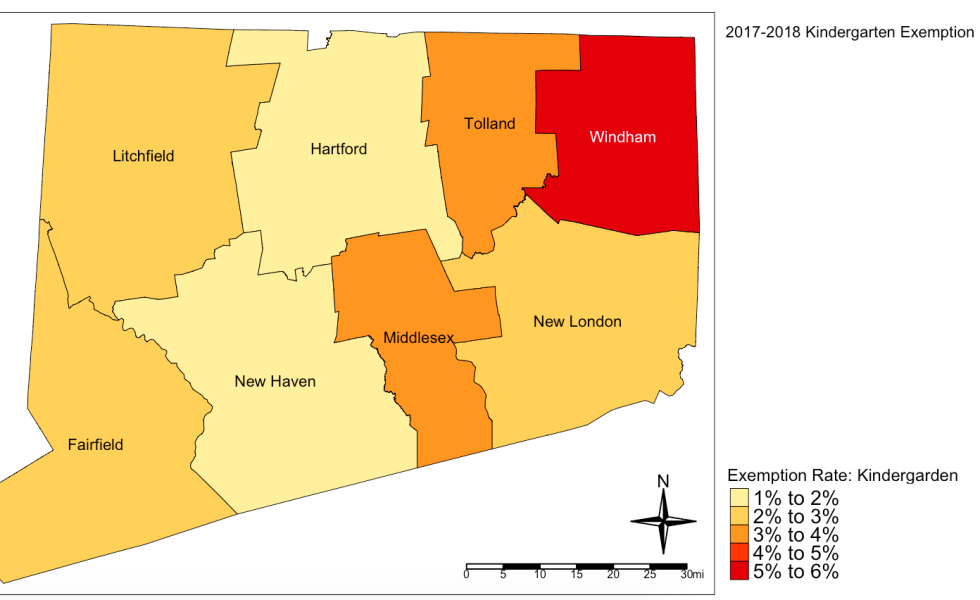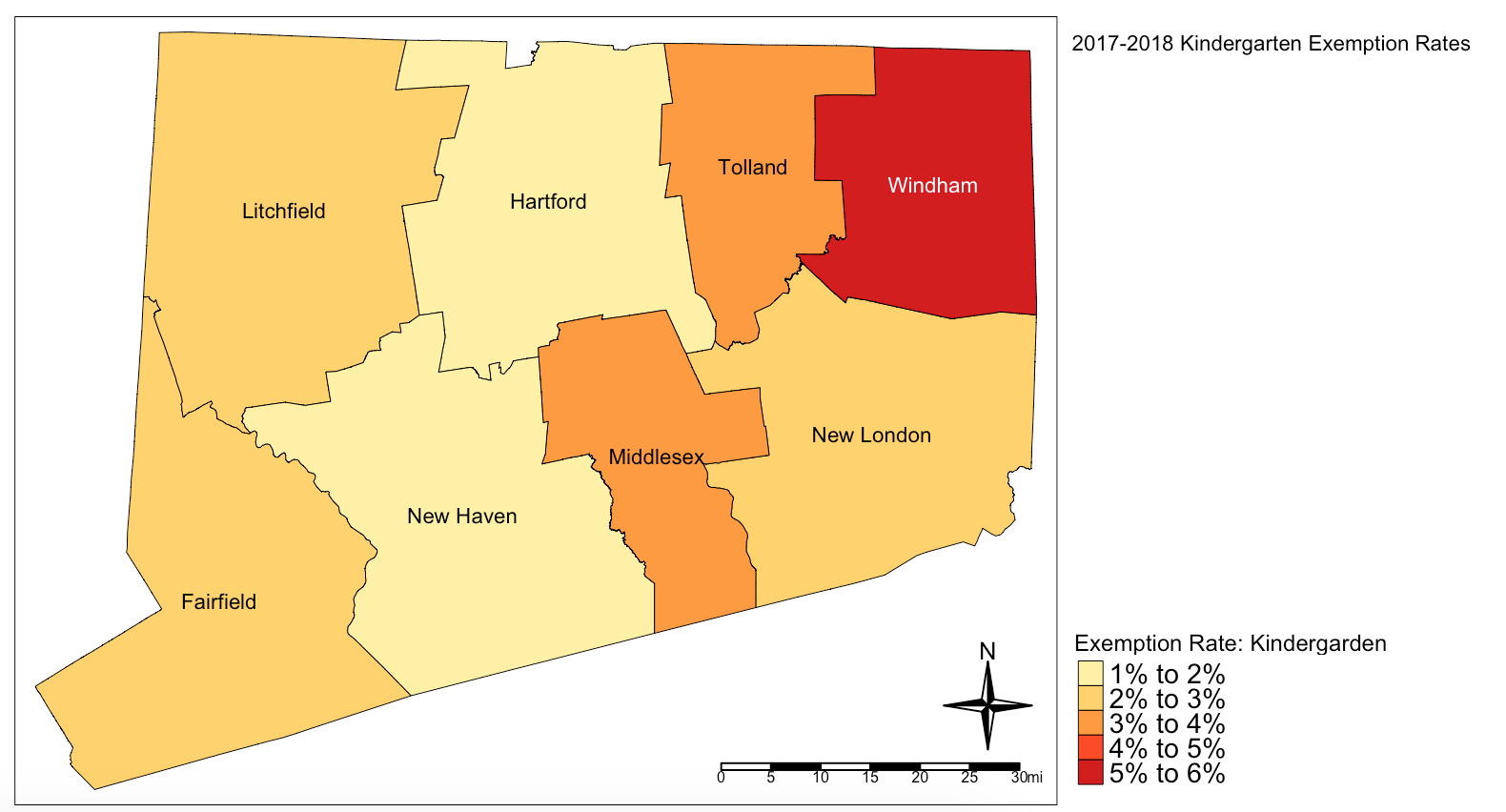Preschool Exemptions to Vaccination in Connecticut

I have to work tomorrow, early, so this is going to be quick.
I saw a news article about a couple from Connecticut who are suing in state court because the department of health is publishing information on vaccine exemptions. The health department data can be accessed here: https://portal.ct.gov/DPH/Immunizations/School-Survey
If you look at those data, it seems like Connecticut would not have a problem if measles appeared. You may remember that a community needs to be well-immunized in order to resist an outbreak of measles. Because measles is so infectious (with a big R-nought), the threshold of community immunity (or herd immunity) needs to be between 93% and 95%. Let’s be a little liberal with that number and say that 93% of children in kindergarten (a “community” in itself) need to be immunized.
So look at this table from Connecticut’s 2017-2018 school survey:

Look at those MMR rates. Nice, right? Well, it’s all nice and well until you realize that these rates do not include exempted students. The department defines “compliancy” as “the percent of students fully vaccinated divided by the subtotal of students excluding those with exemptions (subtotal =total number of students minus the number of exempt students).” (My emphasis in bold.)
So are exemptions a problem? Let’s look at the table for kindergardeners:

In that table, 890 divided by 39,174 is 2.27%. Not bad, right? That still leaves the entire county at a high immunization level. The problem comes when you look at individual counties. Just look at Windham County with 69/1321 — about 5.2% — exempt from vaccination. That’s when things get interesting, and we get this table:

Look at Windham’s MMR vaccine rate: 93.6%. They’re definitely in the danger zone for measles. And here’s a map I made with R using the exemption and enrollment totals:

So, yeah, Windham has a problem. One of the ways to solve it is to do away with non-medical exemptions to vaccination. First, none of the major religions prohibit vaccines. If anything, you need to live for your faith, not die from it. Second, when it comes to personal beliefs, any reasonable person would believe that one has to do good by children and protect them from deadly diseases. Third, doing away with non-medical exemptions has driven immunization rates in kindergarteners up in California. While Connecticut is not California, it’s still worth a shot, especially when you see that non-medical exemptions are the majority (86%) of exemptions in Connecticut.
The people need to know this information for a couple of reasons. Number one, as a parent (and if I were moving to Connecticut), I would want to decide whether or not to put my child in a school in Windham. Or, if I already lived there, I’d be active in the community to help assuage fears of vaccines. Finally, as a public health worker, I’d increase surveillance for vaccine-preventable diseases in those parts of the state where immunization rates are low or exemptions are high. Nothing crazy, but I’d keep an eye on them.